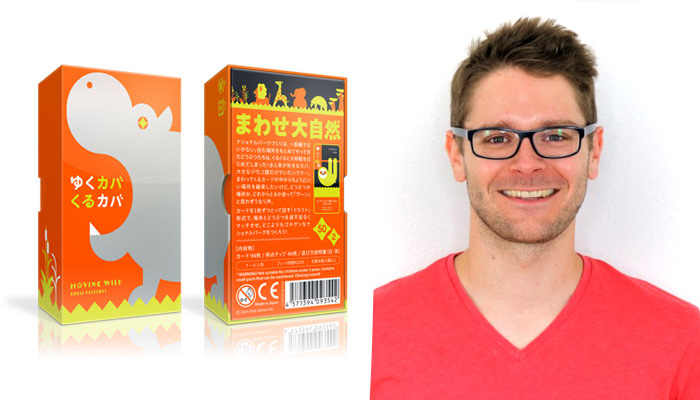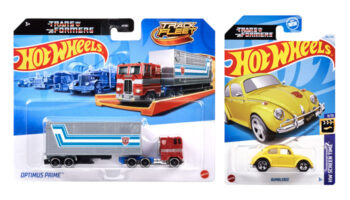Designer Chris Priscott on how his popular card game Zuuli found its way to Oink

Chris, it’s great to connect. To kick us off, where did the idea for Zuuli come from?
Thank you very much for reaching out for a chat! I’m always happy to talk about all things Zuuli and Moving Wild. Zuuli started its life as a few pages of scribblings in my notebook during a sunny evening in 2020. I’ve been a long-time fan of Magic: The Gathering, especially the drafting side of things, and had recently been playing some lighter drafting games like Sushi Go and Draftosaurus… I pondered whether I could make something similar to those games but with a bit more strategic bite to it.
Ponder became wonder, and inspired by my general love for all things nature-related, the first version of Zuuli was put to notebook paper.

And did the game morph much from initial idea to final design?
I still have the very first ‘Zooli’ – its original name – cards I made back in 2020 and even though the game looks very different today, a lot of the core concepts still remain. Looking back through my notebook, the initial concept had elements of genetics, breeding and was much more complex than the deceptively cute game played today.
Even once the more refined core concept was in place, there were still some major changes made during playtesting, such as the removal of X3 multipliers which quickly break the game. I also made quite a few changes to the number of each card, their relative score/size values and habitat requirements to ensure that the game was as balanced and fun to play as possible.
The additional rules on each animal also developed over time, to not only give each animal its own personality but to also help tie it in with the real world – such as grizzly bears being on their own or lions benefitting from being in a pack.

What led you to self-publish?
When I first started Zuuli I had almost zero knowledge of how the hobby game market worked, let alone how to manufacture such a product. After some surprisingly positive feedback during playtests with family and friends, I was encouraged to start looking more seriously into what creating a “real” version of Zuuli might look like.
Google and excellent blogs such as Jamey Stegmaier’s helped a huge amount here, but I’m also incredibly thankful for the support I got from fellow indie publishers like SDR games in the UK, who had started on their own self-publishing journeys a year or so before.
Were you ever tempted to pitch the game to companies and license it?
From a licensing perspective, I was fairly convinced early on that I wanted to experience and learn about the whole end-to-end process of taking a board game concept to a physical reality, so pitching was never really on the table. However, with the complexities of international business and a major shipping crisis, I decided to limit the scope of self-publishing to the UK only. After being paired with a fantastic mentor in Lolo of Red Mojo Games, only then did I start going to Essen Spiel and talking to publishers about bringing Zuuli to their country.

In exciting recent news, Oink has licensed Zuuli and is set to launch the game as Moving Wild. How did the Zuuli come to their attention?
I believe it popped onto their radar for the first time at UKGE last year when it became a bit of a fan favourite of the show. I distinctly remember a few members of the Oink team swinging by the stand in their excellent blue t-shirts to pick up a copy on the recommendation of a colleague or friend. I didn’t find out till after the show – when Oink reached out to me regarding licence availability – that one of those people was Jun Sasaki!
And Oink’s Jun Sasaki has kindly provided us with a quote about how he discovered the game. He told us: “I heard about Zuuli from an employee at UKGE. I thought it sounded like an interesting game and went to the booth to buy it. We played it a few times in Birmingham and then again in Friedrichshafen, which we visited later, and totally loved it. I played it many times after I came back to Japan. I like this game very much. I thought it would be a good fit for Oink Games, so we decided to offer it to them.” Jun says there about it being a good fit for Oink – why do you feel Oink is a good home for the game?
One of the reasons I love Oink Games for Zuuli is that the games they produce are jam-packed with character and style, but also introduce innovative and rewarding gaming experiences – all wrapped up in a small box that can be taken anywhere with you. They’re loved and collected by gamers across the world and it’s an honour to have Moving Wild join that collection.

How involved have you been in the reworking of the game?
For the rework, Keiko and her team have gone above and beyond to keep me involved in the process, sharing ideas of what works and what doesn’t work and collaboratively working together to produce the best reimagining of Zuuli possible.
When I first saw some of the proposed changes I’d be lying if I wasn’t a little bit concerned that someone was changing my “baby”, but after playing a few games that was quickly forgotten… Even though I have played hundreds of Zuuli games, this new version had me as excited as the first time I played the original, with new strategies to explore and tactical drafting decisions to make.
I’m also very happy to have Hachette Boardgames UK handle the distribution for me in the UK. Whenever I’ve met them at conventions, they’ve always had one of the most interactive and engaging stands, with themed costumes and fantastic demo staff. I look forward to the opportunity of working with them to bring Moving Wild to homes and stores across the country.
Do you have other games in the pipeline? If so, what should we keep an eye out for?
I’m releasing my next game – Molehill Meadows – on Gamefound in mid-April and plan to launch the UK version at UKGE 2024. It’s a flip-and-write board game where you play as Mika the Mole, a furry adventurer with a love for treasure and an appetite for juicy worms that unlock mighty worm powers. In a similar vein to Moving Wild, it has a cute appealing look but has enough crunchiness to engage new and experienced board game players.

Sounds fun. Folks can check that out here. Chris, I have one last question for you. What fuels your creativity?
Ah, very good question!
I always try to include at least one!
Ha! I’m not quite sure I can put my finger on exactly what helps the most. One thing that I have noticed that helps is rather than trying to explore all possible ideas, I put limits or restrictions on the design… This helps focus the direction and process.
For example, as a general rule for games I design and publish under Unfringed, I would like them to be simultaneous play only. For Molehill Meadows, I also wanted to design a game in its most raw form, with zero theme, and iterate on it until the version I created in Excel was a lot of fun to play. That way, when adding theme, it would have a strong core that only had greater appeal once a theme was added – rather than letting the theme restrict the design space.
Thanks for this Chris. Good luck with Molehill Meadows and congrats on all that’s happening with Oink and Moving Wild.
–
To stay in the loop with the latest news, interviews and features from the world of toy and game design, sign up to our weekly newsletter here



























